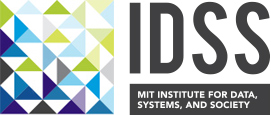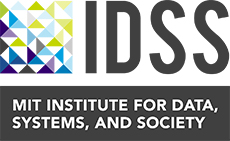Assessing Syrian Refugee Integration Using Call Detail Records from Turkey
Fotini Christia, Political Science
Constantinos Daskalakis, Electrical Engineering and Computer Science
This project combined call detail records on Syrian refugees with a variety of unique data gathered from government service provision and aid organizations to examine prospects for refugee integration in Turkey. Christia and Daskalakis studied how refugee mobility may be affected by factors such as public services, housing opportunities, service provision and policies, or areas with high religious endowments. A main objective of this research was to establish how such factors affected refugee integration and decision-making.
Prior research suggests that family and home-country networks predict how quickly refugees and migrants integrate and utilize their host societies’ available resources. However, advancements in communication technologies have transformed how refugees interact with information and make these decisions. Refugees are relying more on communication tools, such as telephone connections, social media, mapping, and translation tools, to decide on migration destinations and routes, as well as to “maintain closer ties with co-ethnics, access public services in host countries, and interact with formal authorities or with informal brokers (such as smugglers).”
Christia and Daskalakis analyzed refugee-to-refugee call patterns across Turkey to discover any differences in interconnectedness across different Turkish districts. To proxy for refugee flow densities across Turkey, they used the antenna traffic data, specifically the volume, frequency, and direction of calls made by Syrian refugees in 2017. Meanwhile, the district level dataset on public services helped them establish home locations and proximity to public services (e.g. educational and health facilities, aid organizations).
“This data allows us to see if there are particular spaces, such as mosques, schools, or hospitals, that appear to form hubs where refugees meet with one another or with Turkish citizens,” Christia and Daskalakis reported, “and whether those places are similar or different to places where Turkish residents in the data tend to convene. We are able to determine if there are particular persons that receive calls from several other refugees in the area, and what the characteristics of these nodes of centrality are in terms of mobility and communication. As such, we see how levels of centrality correlate with levels of concentration of refugees, as well as with service provision by the Turkish state.”
This project was presented as a poster in the January 2019 Data For Refugees (D4R) conference in Istanbul, and a revised version of that report was published in ‘Guide to Mobile Data Analytics in Refugee Scenarios.’ Christia and Daskalakis are also using this data for a Defense Advanced Research Projects Agency (DARPA) project concerning game theory and security.
A political science PhD Candidate is using some of the results and implications of this work in her dissertation. The funding supported a Social and Engineering Systems PhD candidate who assisted in this research.



